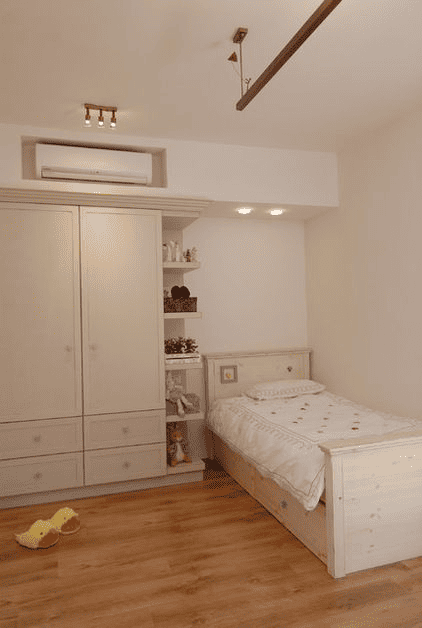Air conditioners have become an indispensable part of our lives, especially during summers when the heat becomes unbearable. However, with so many options available in the market, choosing the right AC can be a daunting task. One of the most important factors that you need to consider while purchasing an AC is its size. And contrary to what most people believe, the term “ton” in the context of air conditioners does not refer to its weight. Instead, it denotes the cooling capacity of the AC.
In this post, we will discuss the difference between 1 ton vs 1.5 ton ACs, the factors that you need to consider while choosing between them, and some tips to help you make the right choice. So, if you are planning to buy an AC and are confused about which size to choose, read on to find out more.
Table of Contents
What is the Meaning of “Ton” in Air Conditioners?

When it comes to choosing an AC, one of the most important factors to consider is its cooling capacity, which is measured in terms of “tons.” However, the term “ton” in the context of air conditioners can be quite confusing for many people, as it is often mistaken for the weight of the AC.
First and foremost, it is important to note that the term “ton” in ACs refers to its power to cool a room, just like “horsepower” in vehicles refers to its power to run. In simpler terms, it denotes the amount of heat that the AC can remove from a room in an hour. One ton of cooling capacity is equivalent to removing 12,000 BTUs (British Thermal Units) of heat per hour. Similarly, a 1.5 ton AC can remove 18,000 BTUs of heat per hour.
To further simplify it, imagine a “1 ton” AC as being equivalent to “1 ton of ice” that can cool a room for 24 hours without melting down completely. This means that a 1 ton AC is suitable for a room that measures between 100 and 150 square feet, while a 1.5 ton AC is suitable for a room that measures between 150 and 250 square feet.
The tonnage of an AC is calculated based on several factors, including the size of the room, the number of windows, the direction in which they face, the insulation, and the height of the ceiling. A professional technician can perform a heat load calculation to determine the ideal tonnage for your room, taking into account all these factors.
Will 1.5 Ton AC Cool Room Faster?

Now, coming to the question of whether a 1.5 ton AC will cool a room faster than a 1 ton AC, the answer is yes. This is because a 1.5 ton AC has a higher cooling capacity than a 1 ton AC. As we know, a 1 ton AC can remove 12,000 BTUs of heat per hour, while a 1.5 ton AC can remove 18,000 BTUs of heat per hour. This means that a 1.5 ton AC produces 50% more cooling than a 1 ton AC.
In simple terms, a 1.5 ton AC can remove more heat from a room than a 1 ton AC, which means that it can cool the same size room faster. However, it is important to note that the cooling speed also depends on other factors such as the insulation of the room, the number of windows, and the direction in which they face. Additionally, a higher tonnage AC may consume more electricity, leading to higher electricity bills.
Which Consumes More Power? 1 Ton or 1.5 Ton AC?

When it comes to buying an air conditioner, power consumption is one of the major concerns for buyers. While the cooling capacity of an air conditioner is measured in tons, the power consumption is measured in watts. So, the question arises: which consumes more power, a 1 ton AC or a 1.5 ton AC? The answer is quite straightforward. A 1.5 ton AC consumes more power than a 1 ton AC. The reason behind this is simple – a 1.5 ton AC has a higher cooling capacity and therefore, requires more power to function.
To give you a better understanding:
- A 1 ton AC requires around 3.5 kilo-watt of power,
- Whereas a 1.5 ton AC requires around 5.2 kilo-watt of power.
However, it’s important to note that power consumption is not just determined by tonnage. The energy efficiency of the appliance also plays a significant role in determining power consumption.
This is where the EER (Energy Efficiency Ratio) or ISEER (Indian Seasonal Energy Efficiency Ratio) rating comes into play. These ratings give us an idea of how energy efficient an air conditioner is. In other words, it helps us understand how much cooling a unit can provide per watt of power consumed.
To better understand this, let’s take a look at a comparison of power consumption between a few randomly selected air conditioners:
| AC Model | ISEER/EER Rating | Annual Power Consumption (watts) |
| Voltas 1 Ton Window AC (2023 model) | 3.10 | 3053 |
| LG 1 Ton Split AC (2023 model) | 4.70 | 577.11 |
| Whirlpool 1.5 Ton 3 Star Split AC (2023 model) | 3.96 | 1015.5 |
| LG 1.5 Ton Split AC (2021 model) | 4.2 | 920.82 |
As seen from the above table,
- The power consumption for every 1.5 ton AC is higher than every 1 ton AC.
- However, we also see that the power consumption for the first and the last entry is almost the same, even though one is a 1 ton AC and another is a 1.5 ton AC. This is possible because we are comparing a window model to a split model. Split models are more energy-efficient, thanks to inverter technology.
How to Choose Between 1 and 1.5 Ton for My Room?

When choosing the right AC size, or tonnage, for your room, there are several important factors to consider. One of the most important factors is the size of your room, which can be calculated by multiplying the length and breadth of the room, with the height of the ceiling being around 10 feet.
Using the table below, you can determine the appropriate tonnage for your room size:
| Room Size (sq. feet) | Tonnage |
| Size < 140 | 1 Ton |
| Size > 140 & Size < 190 | 1.5 Ton |
| Size > 190 & Size < 260 | 2 Ton |
Once you have determined the appropriate tonnage for your room based on its size, there are other factors to consider that may require you to increase the tonnage. For example, if your room receives direct sunlight or you live on the top floor of a building, the room may become hotter and may require a higher tonnage AC to cool effectively.
Additionally, if there are several people (4-6) sleeping in the room, their body heat can increase the temperature of the room and require a higher tonnage AC to cool effectively.
It is also important to consider the insulation of the room and the location of the AC unit. If the room is well-insulated and the AC unit is placed in a central location, it may not require as high of a tonnage AC to cool effectively.
By taking into account these various factors and using the above table as a guideline, you can choose the right tonnage AC for your room and ensure that it is able to cool effectively and efficiently.
Recommended ACs
LG 1 Ton 5 Star AI Dual Inverter Split AC (Latest Model)

MRP: ₹40,490
Godrej 1 Ton 3 Star, 5-In-1 Convertible Cooling, Inverter Split AC (Budget Friendly)

Samsung 1.5 Ton 3 Star Inverter Split AC

MRP: ₹35,499
Carrier 1.5 Ton 3 Star AI Flexicool Inverter Split AC

MRP: ₹33,999
Blue Star 1.5 Ton 3 Star Convertible 4 in 1 Cooling Inverter Split AC

How Much Area 1 Ton AC Covers?

As stated above a 1 ton AC is designed to cool a room with an area of approximately 100-140 square feet. However, the actual area that can be cooled by a 1 ton AC depends on several factors, such as the room’s location, insulation, number of people using the room, and exposure to direct sunlight.
Assuming a typical room with a ceiling height of 10 feet, a 1 ton AC can cool a room with dimensions of 10×10 feet, 12×12 feet, 14×10 feet, or 9×14 feet. These dimensions correspond to a room size of approximately 100-140 square feet, which is the ideal range for a 1 ton AC.
It’s important to note that if a room is exposed to direct sunlight or has poor insulation, a 1 ton AC may not be sufficient to cool the entire space. In such cases, it may be necessary to consider a higher tonnage AC or take steps to improve the room’s insulation.
Can I Use 1.5 Ton AC in a Small Room?

In general, using a 1.5 ton AC in a small room may not be the most suitable option, as the AC may consume more electricity than necessary and lead to higher energy bills. However, there may be some exceptions to this rule depending on various factors.
If the small room is located in a very hot and humid area, or if the room receives direct sunlight for most parts of the day, a 1.5 ton AC may be necessary to cool the room effectively. Additionally, if there are several people living or working in the small room, or if there are heat-generating appliances in the room, a 1.5 ton AC may be required to maintain a comfortable temperature.
Before deciding to use a 1.5 ton AC in a small room, it is important to consider factors such as the size and layout of the room, the amount of sunlight it receives, the insulation of the room, and the number of people and appliances in the room. It is also recommended to consult with a professional HVAC technician to determine the appropriate AC size for your specific needs.
Also Read
- What is the Power Consumption of AC in 1 Hour?
- What is Convertible AC- 5 in 1 & 4 in 1 & More
- Comparing Windows AC Vs Split AC: How to Choose the Right One for Your Home?
Conclusion
In conclusion, choosing the right AC size is crucial for efficient cooling and optimal energy consumption. When deciding between a 1 ton and a 1.5 ton AC, it is important to consider factors such as the size of the room, number of people using the room, room insulation, and location. A 1 ton AC is suitable for a room size of 100-140 square feet, while a 1.5 ton AC is suitable for a room size of 140-190 square feet. It is also possible to use a higher capacity AC in a small room, but this may result in higher electricity consumption. It is important to avoid using an undersized AC as it may fail to cool the room effectively. Ultimately, it is recommended to consult with a professional before choosing the right AC size for your room.
FAQs
Is it better to choose a 1 ton AC or a 1.5 ton AC for a small room?
It is better to choose a 1 ton AC for a room size of 100-140 square feet, whereas a 1.5 ton AC is suitable for room sizes of 140-190 square feet. If you use a 1.5 ton AC in a small room, it may result in faster cooling but also lead to higher electricity consumption.
Can a 1 ton AC cool a large room?
No, a 1 ton AC is not suitable for a room size larger than 140 square feet. If you use a 1 ton AC for a larger room, it will fail to cool the room to the desired temperature even after running for a long time.
How do I calculate the required tonnage for my room?
You can calculate the required tonnage based on the room size using the below table. Room Size (sq. feet): Size < 140 – 1 ton, Size > 140 & Size < 190 – 1.5 ton, Size > 190 & Size < 260 – 2 ton. However, you should also consider factors like room location, insulation, number of people, and direct sunlight before choosing the tonnage.
Can a 1.5 ton AC consume less electricity than a 1 ton AC?
Yes, the electricity consumption depends not only on the tonnage but also on the EER/ISEER rating, which indicates the energy efficiency of the appliance. A newer model with a higher EER/ISEER rating may consume less electricity even if it has a higher tonnage. Therefore, it is essential to consider both tonnage and rating before selecting an AC.





